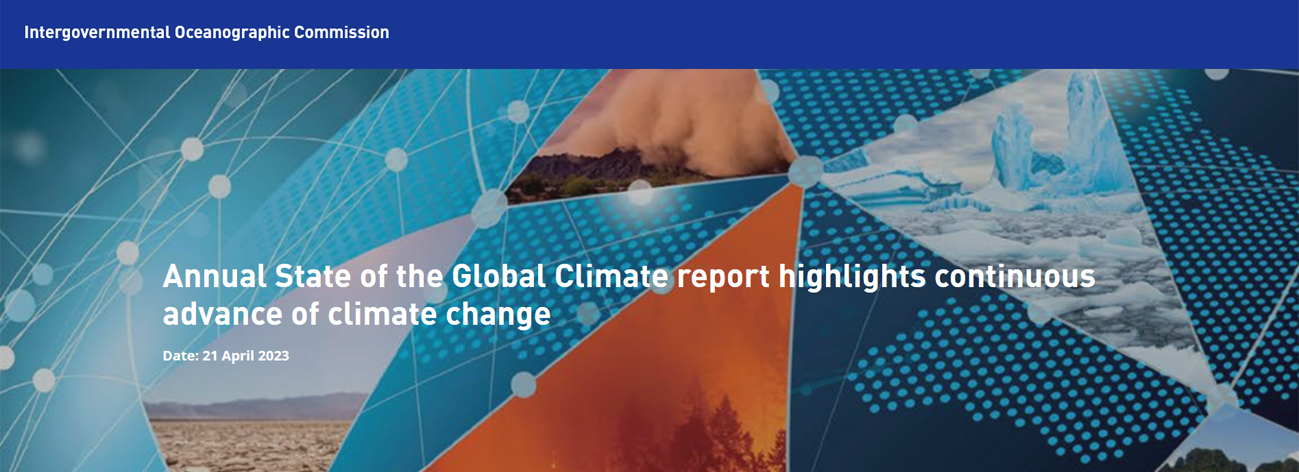Featuring the latest data from IOC/UNESCO on ocean acidification levels across the global ocean, the WMO State of the Global Climate report 2022 focuses on key climate indicators: greenhouse gases, temperatures, sea level rise, ocean heat and acidification, sea ice and glaciers. It also highlights the impacts of climate change and extreme weather.
• Drought, floods and heatwaves affect large parts of the world and the costs are rising
• Global mean temperatures for the past 8 years have been the highest on record
• Sea level and ocean heat are at record levels – and this trend will continue for many centuries
• Antarctic sea ice falls to lowest extent on record
• Europe shatters records for glacier melt

From mountain peaks to ocean depths, climate change continued its advance in 2022, according to the annual report from the World Meteorological Organization (WMO). Droughts, floods and heatwaves affected communities on every continent and cost many billions of dollars. Antarctic sea ice fell to its lowest extent on record and the melting of some European glaciers was, literally, off the charts.
The State of the Global Climate 2022 shows the planetary scale changes on land, in the ocean and in the atmosphere caused by record levels of heat-trapping greenhouse gases. For global temperature, the years 2015-2022 were the eight warmest on record despite the cooling impact of a La Niña event for the past three years. Melting of glaciers and sea level rise - which again reached record levels in 2022 - will continue to up to thousands of years.
Originally published by: Intergovernmental Oceanographic Commission of UNESCO (IOC-UNESCO)
Read full text here!
